Let’s step into the captivating world of Mesopotamia, an enchanting region nestled in the eastern Mediterranean, hailed as one of the true cradles of civilization. The very name, Mesopotamia, whispers its essence in Greek – “between the rivers,” an ode to the lush expanse thriving between the Tigris and Euphrates.
The ancient Mesopotamian civilization was home to remarkable civilizations:
- The ingenious Sumerians
- The formidable Akkadians
- The awe-inspiring Babylonians
- The indomitable Assyrians
These civilizations made significant contributions and set the foundation for the modern civilization. These civilizations are known for creating writing systems, the forge of legal codes, agricultural innovation through masterful irrigation, and the establishing of intricate social structures.
Mesopotamia’s allure lies not only in its past glory but in the enduring legacy it gifted the world. A treasure trove of cultural richness and a reservoir of knowledge, Mesopotamia’s influence echoes through the corridors of history, shaping our comprehension of early civilizations with an everlasting impact.
Think back to a time before cities, numbers, or even stories were written down. That’s how long ago the first sparks of civilization flickered in a land called Mesopotamia. Nestled between the Tigris and Euphrates rivers, this fertile zone became a fertile ground for ideas.
In this article, we will cover 20 interesting facts about Mesopotamia.
20 Interesting Facts about Mesopotamia
Fact #1. Mesopotamia is considered one of the cradles of civilization
In Mesopotamia, people figured out how to tame the rivers, watering their crops even when the rains faltered. They packed together in the first bustling cities, building towering ziggurats and temples. Most importantly, they invented writing, etching their thoughts and stories onto clay tablets.
These innovations weren’t just cool tricks; they changed the course of human history. Imagine, no numbers for counting? No stories to share? No cities to call home? Mesopotamia gave us these things, and so much more. So, the next time you marvel at a skyscraper, write a letter to a friend, or simply count your blessings, remember Mesopotamia, the birthplace of so many wonders.
Fact #2. A Vast Region Spanning Four Countries
Ancient Mesopotamia encompassed a broad expanse of the Middle East, stretching approximately 240 km wide and 480 km long. Presently, the majority of its territory lies within Iraq, while remnants extend into four additional countries.
Mesopotamia extends into northern Syria and northern Kuwait. Its northwestern region reaches into parts of Turkey, and the eastern side is partially situated in Iran.
This historical region played a pivotal role in the evolution of civilization. Even the simple invention of the wheel, originating around 10,000 BC, evolved into the machinery and automobiles that mark modern times, leaving an indelible imprint on history.
Fact #3. Mesopotamia: A Greek Term Signifying “Between the Rivers”
The term “Mesopotamia” is derived from the Greek words meaning “between the rivers.”
This nomenclature encapsulates the geographical essence of the region, which is strategically positioned between two significant waterways—the Tigris and Euphrates.
The profound significance of these rivers in the lives of the local inhabitants cannot be overstated, as they served as indispensable sources of water and sustenance, forming the lifeblood of agricultural activities.
The Tigris and Euphrates rivers played a crucial role in shaping the trajectory of Mesopotamian civilizations. Their presence was instrumental in the growth and development of the civilization.
Fact #4. The Mesopotamian Influence on Astronomy
Astronomy played a pivotal role in ancient Mesopotamian civilization, particularly through their practice of astrology. The Babylonians utilized astrology to predict solstices, eclipses, calendar months, and religious events, attributing significant omens to celestial phenomena.
Between 700 BC and 600 BC, Babylonian scholars shifted their focus to explore astronomy from a different angle. They merged the planetary system with internal logic to depict various aspects of the universe.
The Babylonians’ astrological studies found resonance in multiple regions, influencing Western Europe, the Greeks, and medieval Islam. This enduring legacy continues to shape our understanding of the stars and celestial events.
Fact #5. Beer Was the Most Popular Drink
The mighty Tigris and Euphrates, not only the lifeblood for agriculture, were also the secret ingredient in Mesopotamia’s favorite tipple. More than just a thirst-quencher, beer was a liquid gold, packed with nutrients and even used as a form of currency between merchants.
But hold on, this wasn’t your average six-pack. Mesopotamian beer was a VIP beverage, reserved for the upper crust. Royalty and nobles sipped this precious brew, while the common folk made do with water or weaker concoctions. Why the exclusivity?
Well, brewing was an art form shrouded in mystery. The recipe, a closely guarded secret, involved a unique blend of barley, wheat, and even fruit flavors. The process itself was like a sacred ritual, overseen by no less than a goddess – Ninkasi, the “Lady of the Drink.”
Ninkasi wasn’t just any goddess; she was the quality control queen, ensuring every batch was fit for a king. She was celebrated in hymns and depicted on clay tablets, her image forever linked to this ancient brew.
So, next time you raise a glass, remember Mesopotamia – where beer wasn’t just a drink, but a symbol of wealth, power, and divine intervention. Cheers to Ninkasi, the goddess who made it all possible!
Fact #6. Adoption of the Mesopotamian Calendar by the Hebrews
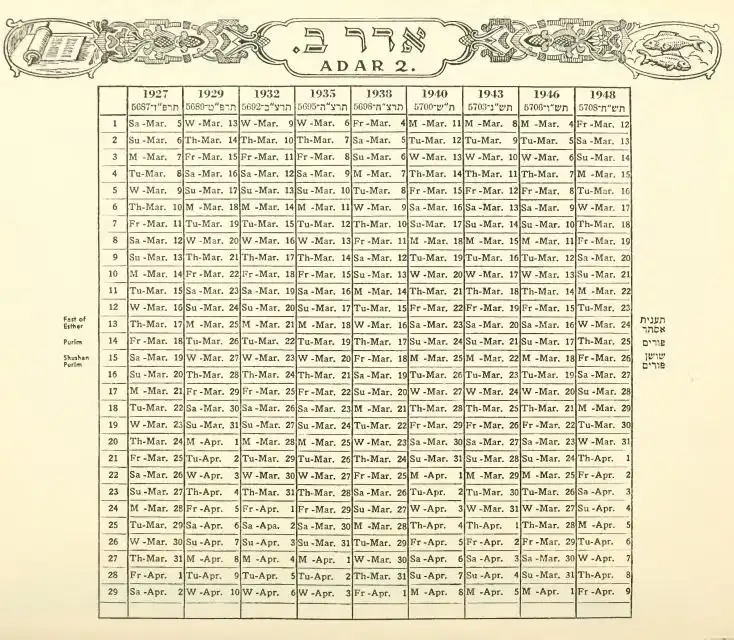
The Babylonian calendar was developed by tracking the phases of the moon. It commences in spring, equivalent to April in the Gregorian calendar.
Around 500 BC, the Jewish people adopted the names of the Babylonian months for their own calendar.
Interesting fact: To align the subsequent year with the lunisolar phase, an extra month was added in the 17th year of the Babylonian calendar.
Fact #7. Pisces, Virgo, Leo, And the Other Zodiac Signs Were Invented During the Mesopotamian Civilization
Did you know that our zodiac signs like Pisces, Virgo, and Leo weren’t just randomly picked?
They have roots in the ancient Mesopotamian civilization! As Mesopotamia evolved, so did their interest in the stars.
The Sumerians were the trailblazers here. They were the first to dive into the whole zodiacal constellations thing, making it a big deal in Mesopotamian astronomy. Imagine stargazing back then – pretty cool, right?
These cosmic discoveries go way back to 2000 BC, but the real studying happened in the 7th century BC. The 12 zodiac signs were divvied up across the 12 months of the calendar, each representing different traits and characteristics.
So, next time you read your horoscope, remember you’re tapping into ancient Mesopotamian star wisdom!
Fact #8. The Emoticons Were First Invented and Used by Mesopotamians
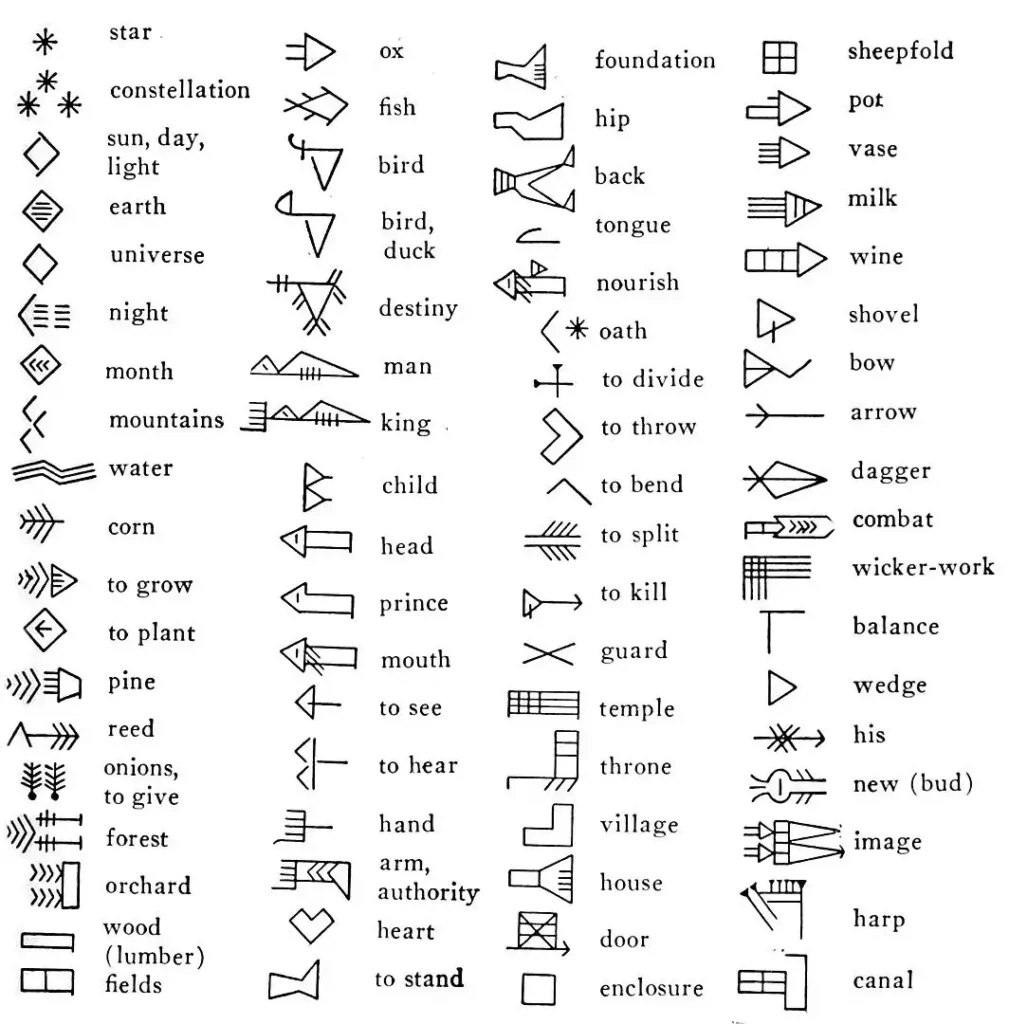
Did you know that the emojis weren’t started by the modern-day texting app, but by the Mesopotamians?
Yup, those ancient peeps were the true pioneers of emoticons!
Nowadays, we can’t imagine a message without emojis, but the Mesopotamians have been around longer than Antonio Meucci’s first basic telephone – talk about timeless!
Back in the day, the Mesopotamians were rocking cuneiform, the written language of human civilization. Instead of texting “LOL,” they used a pictographic mix of animals, symbols, and stick figures – basically, the OG emojis. As their writing system evolved, it turned into cool illustrations and hieroglyphs.
The Sumerians were the brains behind this emoji revolution, making it the go-to method for record-keeping from 4th millennium BC all the way to 1 AD. It even got a shoutout from the Akkadian crew and eight other territories who hopped on the emoji bandwagon.
So, the next time you drop an emoji, remember, you’re just carrying on an ancient Mesopotamian tradition!
Fact #9. The Code of Hammurabi Stands Among the Pinnacle of Ancient Legal Codes
Hammurabi, the illustrious Babylonian king reigning during the 18th century BCE, issued the Code of Hammurabi.
Comprising 282 laws, this comprehensive code covers various aspects of Babylonian society, spanning commerce, property, marriage, family, and criminal conduct. The objective of this code was to establish justice, protect the vulnerable, and uphold societal order.
The Code of Hammurabi left an indelible mark on subsequent legal systems, embodying the enduring principle of “an eye for an eye, a tooth for a tooth”.
Fact #10. The Babylonians developed a sexagesimal numeral system
The Babylonians weren’t just astronomers and empire builders, they were also mathematical pioneers. They pioneered the creation of a numeral system, recognized as sexagesimal, based on the number 60.
This innovative system, unlike our everyday decimal system, utilizes 60 as its base. This choice, possibly influenced by astronomical observations or practical tools, offered several advantages. The high divisibility of 60 made fractions easier to work with, allowing for precise calculations in areas like timekeeping and angular measurements.
The influence of the Babylonian sexagesimal system is still felt today. We see it in our way of telling time, with 60 seconds in a minute and 60 minutes in an hour. It underlies our division of circles into 360 degrees and even finds echoes in geographical coordinates and some calendar systems.
Fact #11. Mesopotamia Society had a Hierarchy, Slavery was Prevalent
In Mesopotamia, society had a hierarchy, and at the very top were kings and rulers with important roles in both politics and religion.
Unfortunately, slavery was also prevalent. War captives, debtors, and criminals could all find themselves relegated to this grueling existence. Slaves performed various tasks, from domestic labor to agricultural work, and faced harsh conditions with limited rights.
Fact #12. Mesopotamia excelled in advanced problem-solving formulas
Before Greek mathematics, Mesopotamia excelled in advanced problem-solving formulas. The Babylonians were experts when it came to numbers and mathematical challenges, having theories and formulas for measuring angles, finding surface areas, and calculating the volume of cylinders.
Around 1800 BC, they created a mathematical table known as Plimpton 322. This clay tablet, inscribed in cuneiform, featured 15 rows and 4 columns.
One remarkable aspect of Plimpton 322 was its inclusion of Pythagorean triples (a, b, and c). These triples, later employed by the Greek mathematician Pythagoras around 500 BC, contributed to the development of the Pythagorean theorem, a2+b2=c2.
This formula has endured for over 4,000 years, continuously impressing mathematicians and educators today.
Fact #13. Mesopotamian civilizations succumbed to the influence of diverse external powers
Despite their achievements, Mesopotamian civilizations were repeatedly invaded by external powers. Over time, various empires, such as the Persians, Greeks led by Alexander the Great, Parthians, and later the Muslim Arabs in the 7th century CE, rose and fell in the region, bringing notable political, cultural, and religious transformations.
Nevertheless, Mesopotamia’s lasting impact endures through its contributions to human civilization, impressive architecture, and the wealth of knowledge preserved in its texts and artifacts, offering valuable glimpses into ancient history.
Fact #14. They Had a Unique Timekeeping System
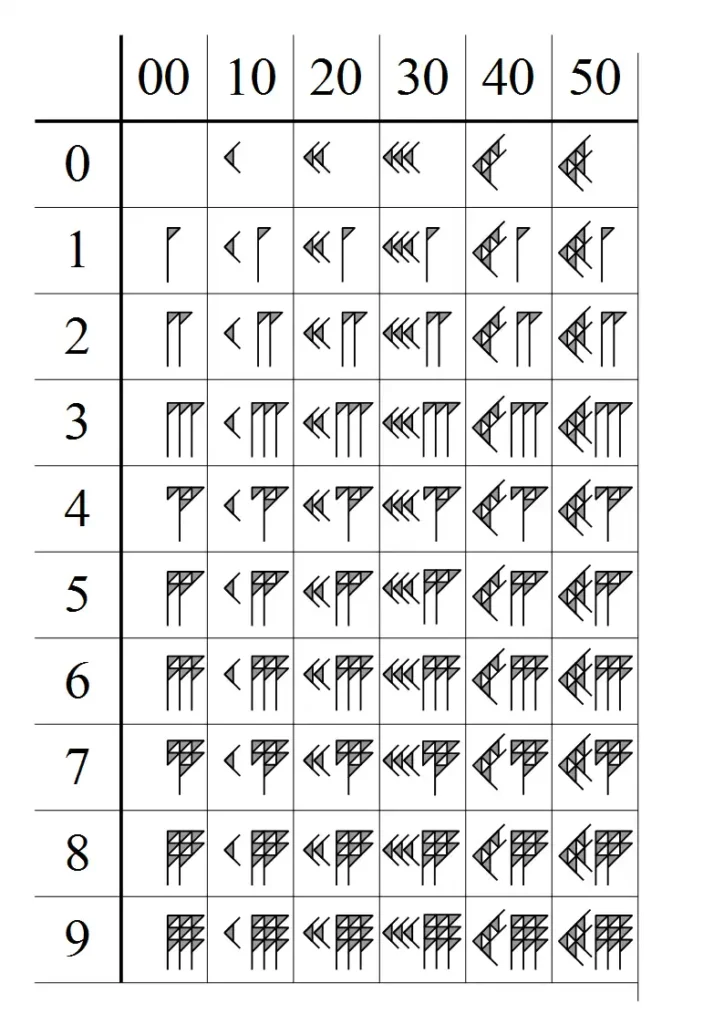
In 4000 BC, the Sumerians developed a distinctive numbering system called sexagenary or base 60. This system was expressed in cuneiform, using symbols for numbers 1 through 59.
The base 60 system played a crucial role in measuring time, introducing the 60-minute hour and 24-hour day. Because 60 had various factors (1, 2, 3, 4, 5, 20, 30, 12, etc.), it became convenient for dividing time evenly. For example, one hour could be easily split into two sections of 30 minutes or 30 sections of 2 minutes each.
The Babylonians later adopted the sexagenary system, and it underwent modifications before being incorporated into the Chinese calendar, Greek Almagest, and European astronomy.
Fact #15. Enduring Scholarship on Mesopotamian Literary Works
Mesopotamia’s profound impact on science and literature, from mathematical problem-solving to uncovering astrological mysteries and developing a writing system, is evident. The presence of numerous libraries throughout the region reflects the importance placed on knowledge.
Several Mesopotamian literary pieces continue to captivate scholars today. One such work is the Epic of Gilgamesh, unearthed in the ruins of a library in Upper Mesopotamia. This collection of ancient poems has been a subject of study for scholars and philosophers, serving as inspiration for modern art and literature.
Fact #16. Mastering Mesopotamian Writing: A Decade-Long Endeavor
In Mesopotamia, both men and women were obligated to acquire proficiency in reading and writing the Sumerian Language. Additionally, they needed a thorough understanding of the syllabary.
As mentioned earlier, the ancient Mesopotamian writing system was predominantly pictorial. Cuneiform wasn’t just any logo-syllabic script; it was intricate and detailed. Achieving a proper understanding and representation of the icons necessitated a substantial 12 years of dedicated practice.
Fact #17. Mesopotamians Believed that their Rulers are Sent by the Gods
Mesopotamians thought their rulers were chosen by the gods. In the politics of Mesopotamia, different dynasties often fought for control. The Sumerians ruled the cities until 2331 BC when the Akkadian Empire took over, but later they were conquered by the Babylonians.
Despite the conflicts, all these dynasties shared a belief that their rulers had divine ancestry. Kings and Queens were often called shepherds, great kings, or kings of the universe.
Fact #18. Mesopotamian Myths’ Influence on Biblical Narratives
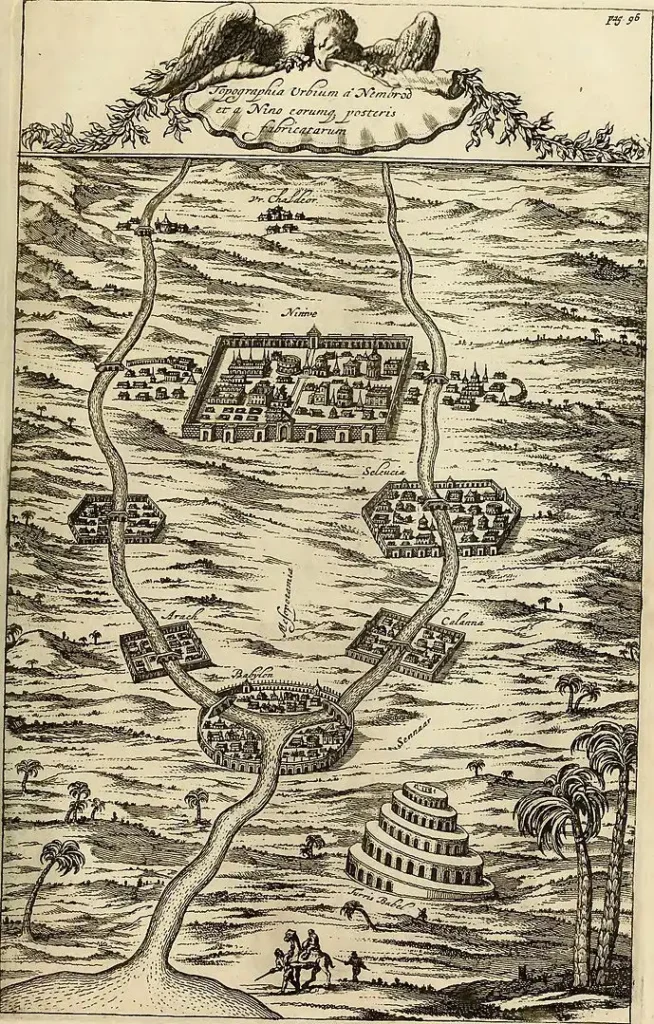
Athanasius Kircher – Wikimedia Commons
It’s widely acknowledged that Mesopotamian literature played a role in shaping certain stories in the Bible. The early chapters of the Old Testament even identify it as the ancestral land of figures like Abraham, Cain, and Abel.
Furthermore, similarities in composition styles are evident between Mesopotamian mythology and biblical tales. The myth of Adapa and the fall of man shares common concepts with the flood stories in the Atrahasis epic and the narrative of Noah’s ark.
Fact #19. Discovery of the Oldest Map in Mesopotamia
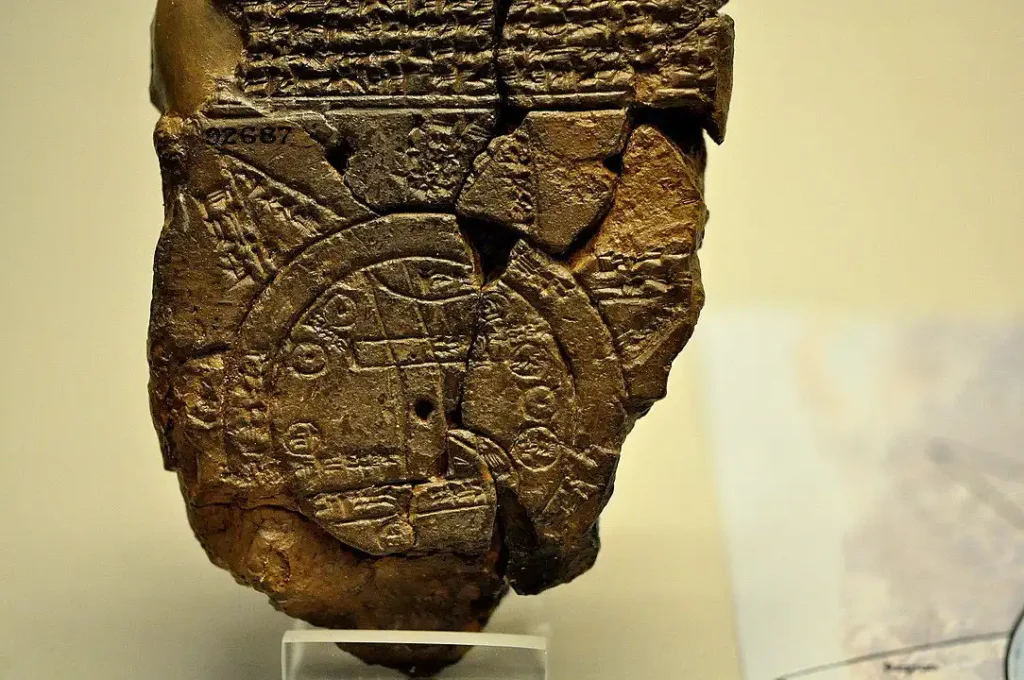
Imago Mundi, commonly known as the Babylonian Map of the World, stands as the earliest known form of cartography. Unearthed near a Babylonian settlement east of the river Euphrates, this ancient map is a clay tablet featuring two descriptive cuneiform inscriptions alongside a geographical representation of Mesopotamia.
It is believed to have been crafted between the 8th and 7th centuries BC, encompassing territories of Babylon, Assyria, and Elam.
Currently housed at the Trustees of the British Museum in London, the Babylonian Map of the World provides a fascinating glimpse into the early worldviews of Mesopotamian societies.
Fact #20. Mesopotamia’s Pioneering Contributions Across Disciplines
Mesopotamia stands as not just humanity’s inaugural golden age but also the birthplace of the first messiahs and long-distance champions. The foundations of moral codes, legal precedents, literary debates, proverbs, and sayings were laid here.
Additionally, Mesopotamia boasts several other firsts, including the invention of the initial aquarium, literary portraits, biblical parallels, and pharmacopeia. Samuel Noah’s comprehensive exploration in “History Begins at Sumer” (1988) delves into the myriad of pioneering achievements originating in Mesopotamia.
You may also like:
Final Thoughts
In conclusion, exploring these 20 interesting facts about Mesopotamia unveils the remarkable contributions of this ancient civilization. From the invention of writing and the wheel to the intricate cuneiform script, Mesopotamia’s impact on language, mathematics, and astronomy is undeniable. The rich history and enduring influence of this region, often referred to as the “Cradle of Civilization,” continue to fascinate scholars and enthusiasts alike.
Understanding these interesting facts about Mesopotamia provides a glimpse into the foundations of human civilization and the incredible innovations that emerged in this historical heartland.



